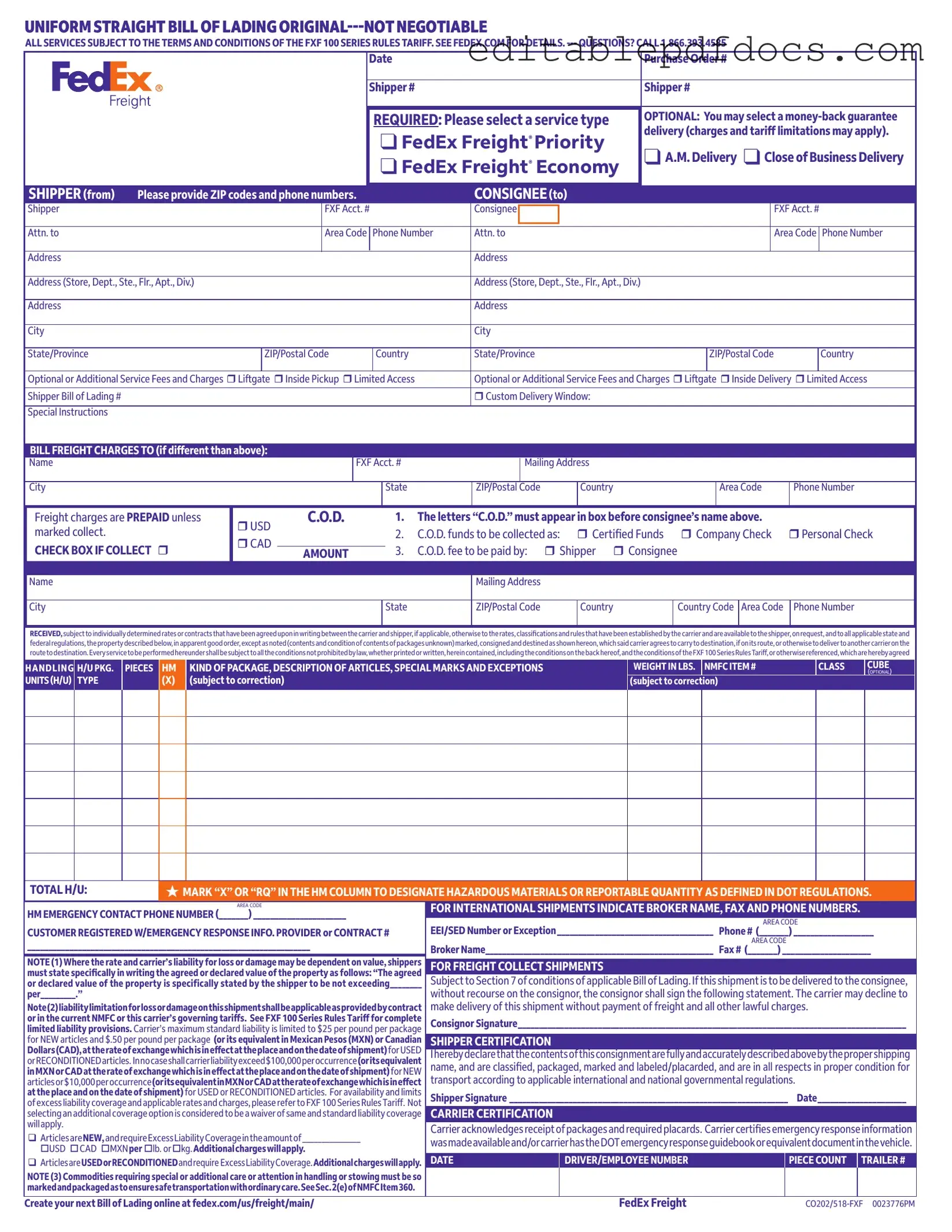Filling out a FedEx Bill of Lading form can seem straightforward, yet many individuals make common mistakes that can lead to delays or complications in shipping. One frequent error is failing to provide complete contact information for both the shipper and the consignee. It is crucial to include accurate ZIP codes and phone numbers. Omitting this information can result in miscommunication and potential delivery issues.
Another mistake often made involves not selecting the appropriate service type. The form offers various options, such as FedEx Freight Priority or Economy. Selecting the wrong service can lead to unexpected costs or delays in delivery. Additionally, people sometimes overlook the optional money-back guarantee. While it is not mandatory, this option can provide peace of mind, especially for time-sensitive shipments.
Inaccurate declaration of freight charges is another area where errors occur. Shippers must clearly indicate whether the freight charges are prepaid or if they will be collected upon delivery. Mislabeling this can cause confusion and potentially lead to refusal of delivery. Furthermore, when using Collect on Delivery (C.O.D.), the letters “C.O.D.” must be explicitly marked in the designated box. Failing to do so can lead to complications in the payment process.
Some individuals neglect to specify the contents of the shipment accurately. It is essential to describe the items being shipped, including their weight and type of packaging. Providing vague descriptions can result in issues with customs or delivery, particularly for international shipments. Additionally, marking hazardous materials correctly is vital. If applicable, marking “X” or “RQ” in the appropriate column is necessary to comply with safety regulations.
Shippers sometimes forget to include special instructions or requests. If specific handling or delivery requirements exist, these should be clearly noted on the form. Lack of clear instructions can lead to mishandling or failure to meet the shipper's expectations. Moreover, failing to sign the Bill of Lading can invalidate the document. A signature confirms that the shipper agrees to the terms and conditions outlined in the form.
Another common mistake is not verifying the accuracy of the information provided. Double-checking all entries, including names, addresses, and account numbers, can prevent many issues. Errors in this information can lead to delays or misdelivery. Lastly, individuals often overlook the importance of understanding the terms and conditions associated with the shipment. Familiarizing oneself with the FXF 100 Series Rules Tariff can provide valuable insights into liability and coverage options.
In summary, attention to detail is crucial when filling out the FedEx Bill of Lading form. By avoiding these common mistakes, shippers can ensure a smoother shipping process and minimize the risk of complications. Properly completing the form not only facilitates timely delivery but also helps in maintaining clear communication between all parties involved.
